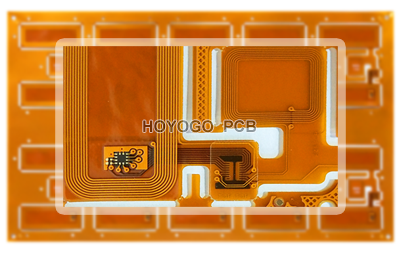What Should be Paid Attention to When Soldering Flexible PCB?
Advantages of flexible PCB:
a.It can be bent, folded, and winding freely, and can be moved and stretched freely in three-dimensional space.
b.Its heat dissipation performance is good, you can use it to reduce the size.
c. It can achieve lightweight, miniaturization, light and thin, so as to realize the integration of components and wires.

Because of these characteristics, flexible PCBs are now widely used in digital cameras, mobile phones and mobile phone batteries, medical, automotive, aerospace and military fields. Its circuit design is relatively simple. Although it is relatively more expensive than rigid circuit boards, it can solve the functions that rigid PCB cannot achieve. In order to make a high-quality flexible PCB, we need to pay attention to:
1. Before soldering, please apply flux to the pad and process it with a soldering iron to avoid poor tin plating or oxidation of the pad. Generally, there is no need to process the chip.
2. Please use tweezers to carefully place the chip on the PCB, taking care not to damage the pins. And align with the pad to ensure that the chip is placed in the correct direction. Then adjust the temperature of the soldering iron to more than 300 degrees Celsius, dip a small amount of solder on the tip of the soldering iron, and press down the aligned chip with a tool. And add a small amount of flux to the two diagonal pins, and still hold down the chip, solder the two diagonal pins, so that the chip is fixed and cannot be moved. If necessary, adjust or remove and re-align the position on the PCB.
3. When we start soldering all the pins, we should add solder to the tip of the soldering iron and apply flux to keep all the pins moist. And touch the end of each pin of the chip with the tip of the soldering iron until you see the solder flowing into the pin. When soldering, we must keep the soldering iron tip parallel to the soldered pin to prevent overlap due to excessive soldering.
4. After all the pins are soldered, please wet all the pins with flux to clean the solder. And suck up the excess solder where needed to eliminate any short circuits and overlaps. Finally, we need to use tweezers to check whether there is a false solder. After the inspection is completed, remove the flux from the PCB, and soak the hard bristle brush with alcohol and wipe it carefully along the pin direction until the flux disappears.
5. SMD resistor-capacitor components are relatively easy to solder. We can put tin on a solder joint first, then put one end of the component, clamp the component with tweezers, and then see if it is placed properly after soldering one end. If it has been aligned, solder the other end.
HOYOGO is a international, professional and reliable flexible PCB factory. We have 2 factory production bases. Our production is strictly following high quality system of automotive products, we certified with ISO9001, ISO14001, ISO13485 and TS16949 and C-UL-S. All products strictly follow acceptance standard IPC-A-600-H and IPC-6012.
评论
发表评论